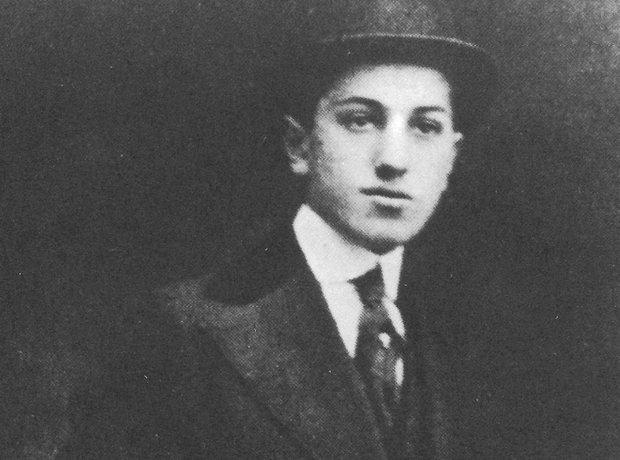
George Gershwin was born in New York City into a Russian Jewish immigrant family. As a boy, George frequented the local Yiddish theatres, ran errands for them and appeared onstage as an extra. Around the age of 10, he took to playing the piano his parents had bought for his older brother Ira.
 The acclaimed piano teacher Charles Hambitzer took Gershwin on at the age of 14 and immediately realized the level of talent he had on his hands. ‘I have a new pupil who will make his mark if anybody will. The boy is a genius,’ Hambitzer wrote to his sister. Gershwin was sent off to concerts and given significant pieces by the great composers to learn for the piano. Hambitzer's efforts certainly paid off.
The acclaimed piano teacher Charles Hambitzer took Gershwin on at the age of 14 and immediately realized the level of talent he had on his hands. ‘I have a new pupil who will make his mark if anybody will. The boy is a genius,’ Hambitzer wrote to his sister. Gershwin was sent off to concerts and given significant pieces by the great composers to learn for the piano. Hambitzer's efforts certainly paid off.Gershwin began his career as a song plugger in New York’s Tin Pan Alley. To earn extra, he also worked as a rehearsal pianist for Broadway singers. In 1916, he composed his first published song, ‘When You Want ’Em You Can’t Get ’Em.’ His first big hit was 'Swanee', composed in 10 minutes on a bus. Not long afterwards, the singer Al Jolson heard it and recorded it. ‘Swanee’ sold a million sheet music copies, and an estimated two million records. It became the biggest-selling song of Gershwin’s career.
After the disappointing reception for Porgy and Bess, Gershwin moved to Hollywood and worked on many film scores. His music for Shall We Dance, starring Fred Astaire and Ginger Rogers, married ballet with jazz in a new way, and ran for more than an hour in length. It took Gershwin several months to write and orchestrate it.
Early in 1937, Gershwin began to complain of blinding headaches and there were signs he was suffering coordination problems. He was diagnosed with a brain tumour. An operation was unsuccessful, and Gershwin died on 11 July at the age of 38.
From the opening clarinet glissando of Rhapsody in Blue to such standards as 'Embraceable You' and 'Someone to Watch Over Me', Gershwin's music has been part of our world for almost a century. It evokes an era of glamour and sophistication and gave the United States its first authentic voice in the concert hall. The American singer Michael Feinstein has said, 'The Gershwin legacy is extraordinary because George Gershwin died in 1937, but his music is as fresh and vital today as when he originally created it.'
Read more




